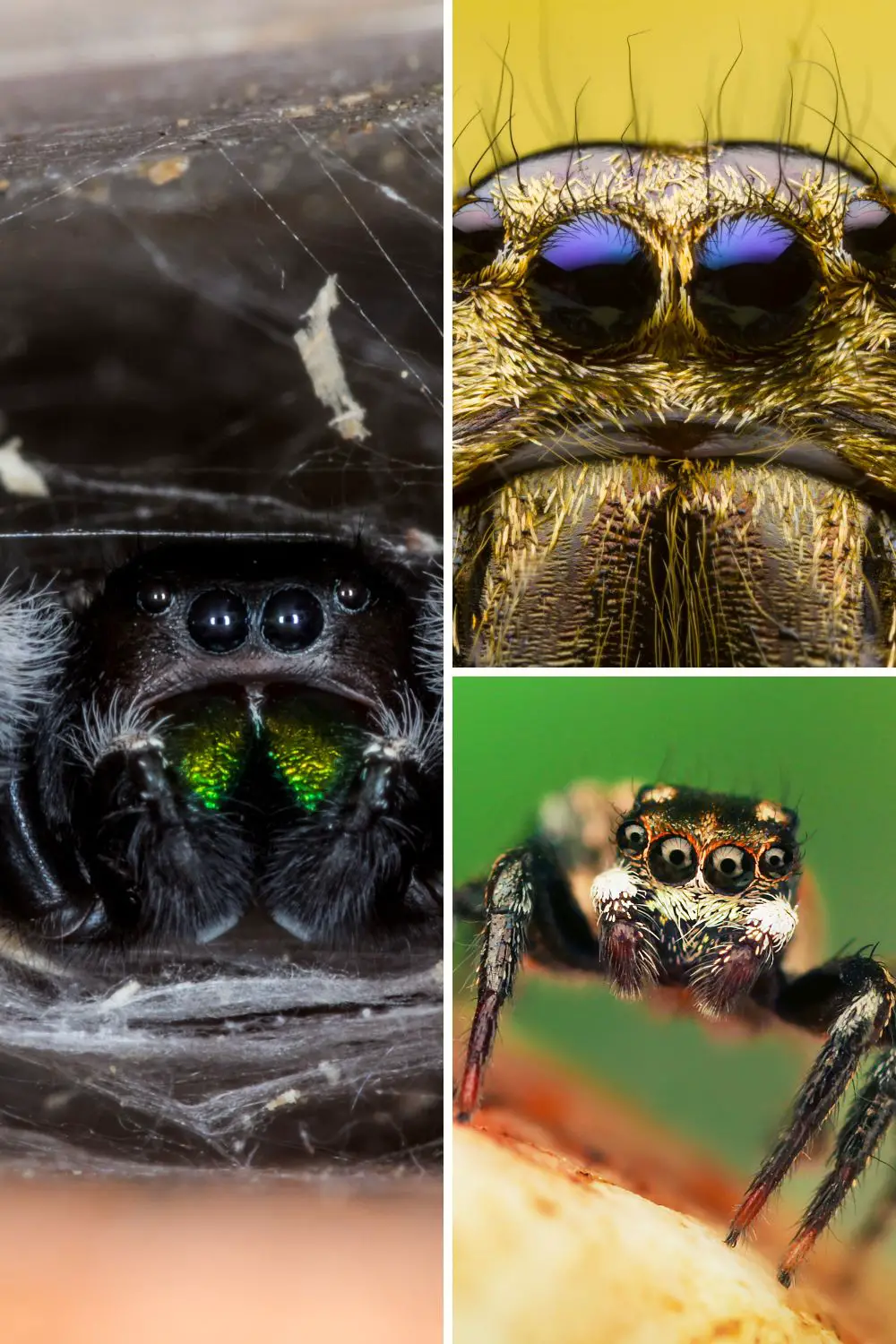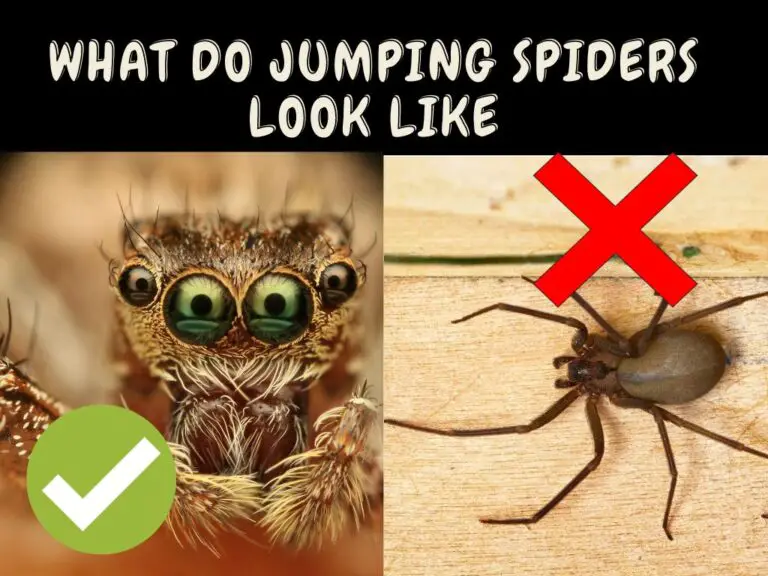Jumping spiders are fascinating and unique creatures that are known for their impressive jumping abilities and adorable faces. However, if you have never seen a jumping spider before, you may be wondering what they look like. In this blog post, we will take a closer look at the physical characteristics of jumping spiders, including their size, color, and body structure.
How You Can Tell Its Jumping Spider
Jumping spiders are typically small in size, with most species ranging from 1/4 to 3/4 inch in length. They have a compact, robust body structure and are known for their large, forward-facing eyes, which give them excellent vision. Jumping spiders have eight legs, with the front pair being the longest and most powerful for jumping.
One of the most distinctive features of jumping spiders is their vibrant coloration and intricate patterns. They can come in a wide range of colors, including black, brown, gray, white, and even bright and bold hues such as red, orange, and green.
Many species also have intricate patterns on their bodies, including stripes, spots, and even iridescent scales.
In addition to their coloration and body structure, jumping spiders are also known for their unique behaviors and movements. They are incredibly agile and fast-moving, and can often be seen jumping from one surface to another with ease. They are also known for their curious and inquisitive nature, and can sometimes be seen tilting their heads or waving their front legs in a characteristic display.
Distinctive Markings
One of the most noticeable features of jumping spiders is their large, forward-facing eyes. These eyes are typically large and round, and are often brightly colored. In some species, the eyes are surrounded by distinctive patterns or markings that help to identify the spider.
Jumping spiders may also have distinctive patterns or markings on their legs, body, or abdomen. For example, some species have bold black and white stripes on their legs or a brightly colored abdomen. Others have iridescent scales or hairs that can change color depending on the angle of the light.

Jumping Spider Colors
Jumping spiders can come in a wide range of colors, including black, brown, gray, green, blue, red, and even metallic hues like gold and silver. The exact colors that a jumping spider can have often depend on its species, habitat, and environment.
In general, jumping spiders are known for their striking and vivid coloration, which often includes bold patterns and contrasting hues. These colors can be used for a variety of purposes, including camouflage, communication, and mate attraction.
Some jumping spiders, such as the green jumping spider (Mopsus mormon), have bright green bodies that help them blend in with their leafy surroundings. Others, like the Regal Jumping Spider (Phidippus regius), have bold black and white stripes on their legs and striking red abdomen.
One interesting aspect of jumping spider coloration is that some species can change color in response to their environment. For example, the male Habronattus pyrrithrix spider can change the color of his abdomen from bright red to dark maroon depending on the angle of the light.
Overall, the colors of jumping spiders can be quite diverse and often play an important role in the spider’s survival and behavior. If you are interested in learning more about the colors and patterns of jumping spiders, there are many online resources and field guides available that can provide more information.
Jumping Spiders that can be mistaken for venomous spiders
Jumping spiders are often confused with other spider species, particularly those that are venomous or considered dangerous to humans. However, it is important to note that jumping spiders themselves are not dangerous to humans and their venom is not harmful to humans.
Nonetheless, it is still important to be able to distinguish between different spider species to avoid any potential harm. Here are some common spider species that are sometimes mistaken for jumping spiders:
- Brown Recluse Spider: This spider has a distinctive violin-shaped marking on its back and is known for its venomous bite, which can cause severe pain and tissue damage.
- Black Widow Spider: This spider has a shiny black body with a red hourglass-shaped marking on its abdomen. Its venom is potent and can cause muscle pain, cramps, and spasms.
- Wolf Spider: This spider is often mistaken for a jumping spider due to its similar size and body structure. However, wolf spiders have different eye arrangements and are known for their hunting abilities. They are not considered dangerous to humans.
- Hobo Spider: This spider has a brown, hairy body and is often found in dark, damp areas such as basements and crawl spaces. Its venom is believed to be toxic and can cause necrosis in some cases.
- Yellow Sac Spider: This spider has a pale yellow body and is known for its venomous bite, which can cause redness, swelling, and pain.
While these spiders may share some physical similarities with jumping spiders, there are several key differences in their appearance and behavior that can help distinguish them. It is always important to exercise caution and seek professional help if you are unsure about the identity of a spider.
Comparing Male and Female Jumping Spiders
Yes, there are often physical differences between male and female jumping spiders. In some species, the males are smaller than the females, while in others, the males are larger. Additionally, males may have more colorful or ornate markings on their bodies than females.
One notable difference between male and female jumping spiders is their pedipalps, which are specialized appendages near the mouth that are used for mating. In male jumping spiders, the pedipalps are often larger and more pronounced than in females.
The shape and structure of the pedipalps can also differ between males and females, and may be used to help identify the sex of a jumping spider.
Conclusion:
In conclusion, jumping spiders are small but fascinating creatures with unique physical characteristics and behaviors. Their vibrant coloration, intricate patterns, and forward-facing eyes make them easy to spot and identify. Whether you are a seasoned spider enthusiast or just curious about these amazing creatures, learning about what jumping spiders look like can help you appreciate their beauty and complexity even more.
No related posts.




